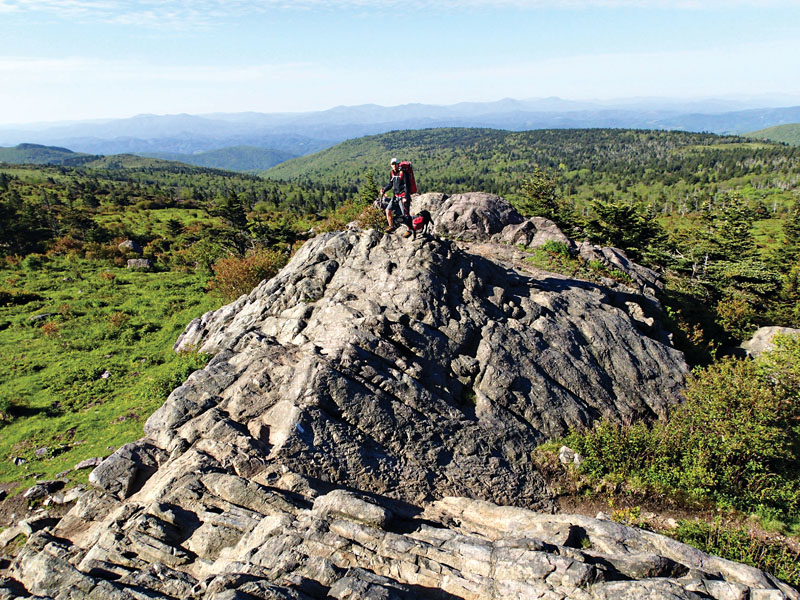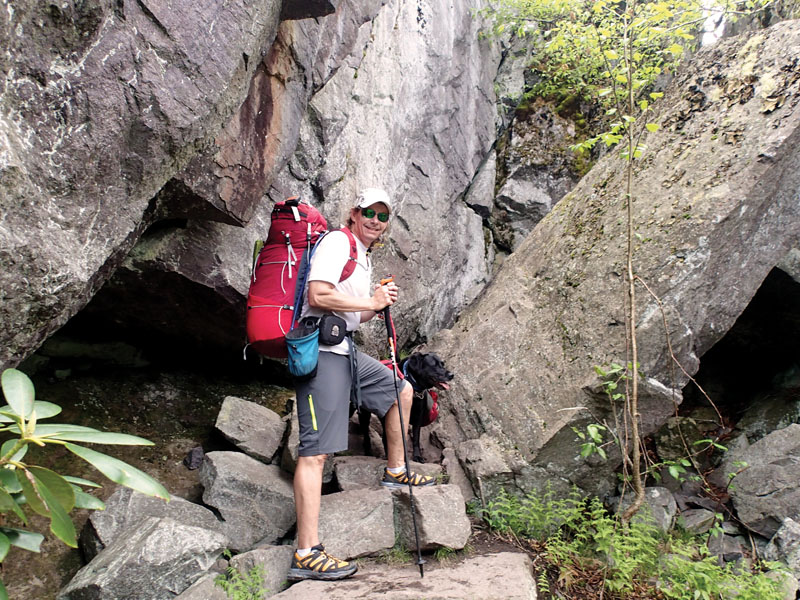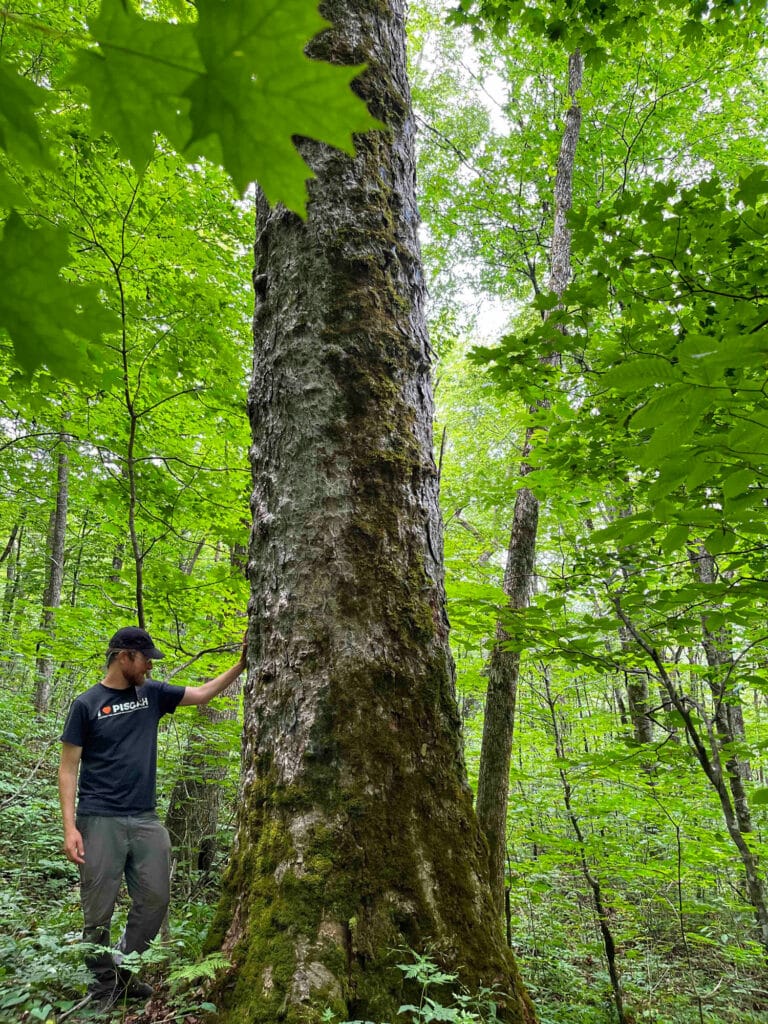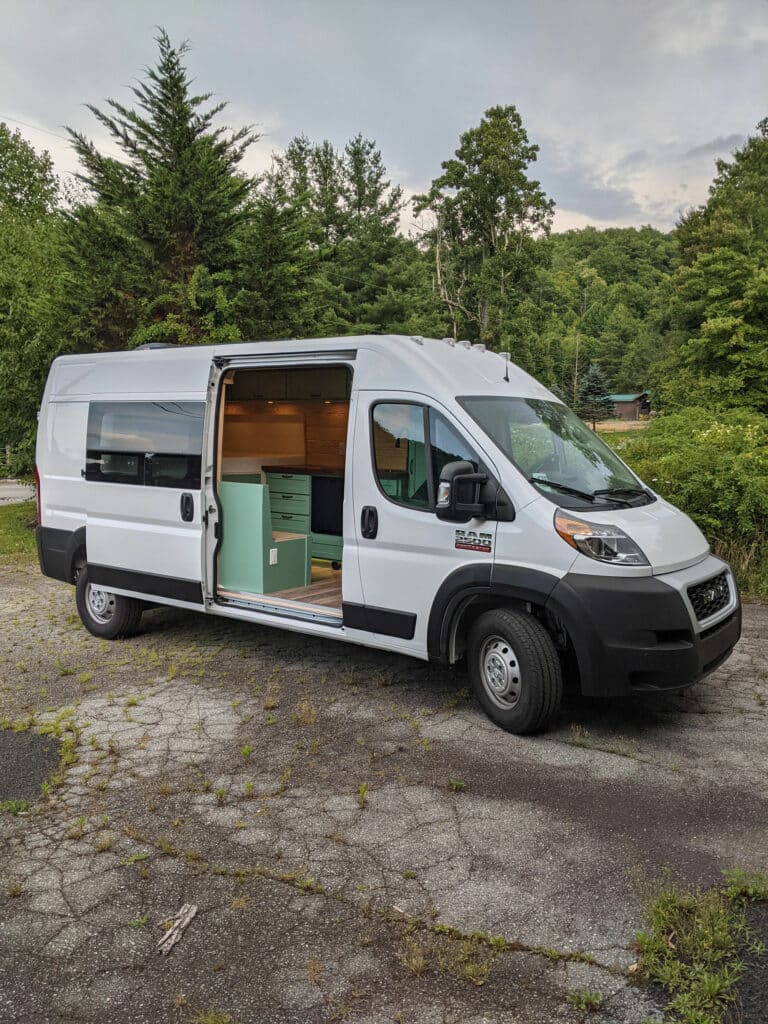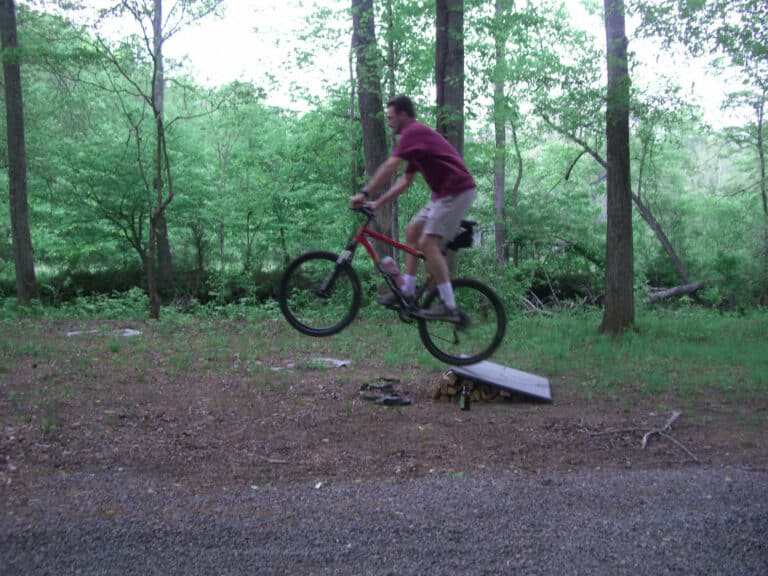Blind Hiker Trevor Thomas (aka Zero/Zero) was first profiled in Blue Ridge Outdoors in April 2009, after he completed a rib-cracking thru-hike of the Appalachian Trail, during which he fell more than 3,000 times and racked up eight hospital visits. We’re happy to report that Trevor’s still hiking, and, with the help of hard-won experience and his guide dog Tennille, falling down a whole lot less. He started the Team FarSight Foundation to help get blind kids into the wilderness, and recently teamed with Asheville’s A Brighter Path Foundation to sponsor an Outdoor Adventure Camp for the blind. We caught up with Trevor in early June, as he was gathering snow-melt reports in preparation for a solo thru-hike of the Colorado Trail.
When Blue Ridge Outdoors last checked in with you, you had just completed the Appalachian Trail as the second blind thru-hiker. Can you give us an update on what’s happened since then?
TT: A lot of miles, a lot of trails, and a lot of great expeditions. Currently we’re preparing to go out and through-hike the Colorado Trail, which is 500 miles from Denver to Durango. It’s high-altitude work and I’ll be doing it solo with my guide dog, Tennille. This season we’re pretty excited because I will now be going over 20,000 through-hiking miles on some of America’s most rugged and remote long trails. After we get done with the C.T., we’ll be going to Kentucky to hike the Sheltowee Trace trail. That’s about 318 miles through Kentucky and eastern Tennessee, and is the original route that Daniel Boone took into the wilderness. Kentucky is one place that I’ve never hiked before, and I’m looking forward to that.
When you through-hiked the AT, you did it without a dog, but now you have Tennille.
Tennille is unique in the guide dog world. She is trained, like every other guide dog, to assist me in everyday life, when I’m in town. But she is also [trained as a trail dog], the only one of her kind. When we hike, she doesn’t just come with me as a companion; she actually works. She finds things for me. She’s very good at finding water. She finds trail signs. She’ll find rocks that could hurt me, and my personal favorite: she knows how tall I am. So if there’s something that’s going to smash me in the head, she knows to alert me as well. We work one hundred percent as a team. She finds things that I need, and then I figure out what we need to do at that point to continue down the trail.
When I did the A.T., I did it solo, just like every other hiker does. But the thing about the AT is that there are so many people on it that it’s actually pretty hard to hike the trail alone. And one of my goals as a blind person, and one of the things I originally wanted to get out of hiking was to get my independence back. And it took me a long time to get to that point. Three years ago, I had hiked over ten thousand miles—on the A.T., the PCT, the John Muir—I’d done quite a few trails. But I’d always had a partner with me. It was an accomplishment, yes, but it wasn’t the accomplishment I wanted. So I sat down after a failed attempt on the Colorado Trail because my partner didn’t show, and I decided to reinvent myself as a hiker, to change my hiking style, get a guide dog, and put a lot of new elements together. I wanted to see if it would be possible for a blind person to through-hike the lesser-traveled of the long trails, and do it alone. And that’s what I’ve done, and that’s what Tennille has enabled me to do. The treks that I’m doing these days I would never be able to attempt without the assistance of Tennille, with her unique skills.
You’ve reported that you fell over 3,000 times when you first through-hiked the AT.
Yes.
Which led to four broken ribs and eight visits to the hospital. Has hiking gotten a little less precarious now that you have Tennille?
Thanks to her, it’s a rarity that I fall anymore.
What’s something else that was hard for you at first but is easy now?
I never would have dreamed when I first started that I would be able to navigate without having anybody around. I don’t have a GPS. I don’t believe in them for what I do. I don’t want to be reliant on something that could break. Instead I rely on my skills in echolocation, and I rely on Tennille. I have very, very hyper-accurate directions that we write before I go out and have them sent to my iPhone, which can read them to me. I keep track of my cadence, which tells me how fast I’m hiking, and I keep track of time. Together that gives me distance. And there’s only about two or three times, maybe four, during an average day, where definitively I can say one hundred percent I know where I am. Say my map tells me that 2.5 miles into my hike that day, there will be a stream. When I get to that stream, I can say ‘Yes, I know where I am.’ So for me it’s like connecting the dots. One point to the next point to the next point.
How have your experiences in the backcountry changed you?
I think that, since I went blind later in life, and I started hiking as a way to regain some of that independence that I had as a sighted person. It’s given me the confidence to attempt just about anything that confronts me. I’ve fallen a lot in the back country. That taught me that it’s okay to fail, and that it’s how you recover from those failures that’s going to make you grow as a person.
And what are your favorite moments in the woods?
I’ve always said that a bad day on the trail is better than a good day in town. In the backcountry is where I feel normal. It’s where I feel the most alive, and it’s where I’m just like everybody else. It’s very invigorating, very freeing. My best moments aren’t the summits that I’ve sat on top of that nobody thought I could reach… but every single moment after some sort of disaster, moments where we thought through the problem, we embraced it, solved it, we succeeded, and we were able to continue on forward.
Tell me about the Team FarSight Foundation.
The sighted community often consider blind people as third-class citizens. I got disgruntled about the unemployment rate for blind adults in America [nearly 70% by some estimates – Ed.]. I figured that if I could give blind kids the experiences that I’ve had in the backcountry, it could change their lives dramatically. So I founded TeamFarSight. I wanted blind kids to be able to fall back on these experiences that they would have in the backcountry the next time somebody said, ‘No, you can’t do this because you’re blind.’ And they could say, ‘Well, wait a minute. I think that I can, because I did this: I climbed a rock face, I hiked a long trail. People said I couldn’t do that, but I did.’
